The Egyptian civilization is one of the most influential periods in human history. However the award for the most influential falls in the hands of the Greeks/Romans. The difference in Greek/Roman and Egyptian views of humanity in the world shows how humanity change overtime. Through more and more human discoveries, the more humanity moves into the center of the world. Humanism has changed how humans and other animals are depicted in Art.
Figure of a Cat, Saqqara, Egypt, 350 B.C.E. – 1st century C.E – Brooklyn Museum
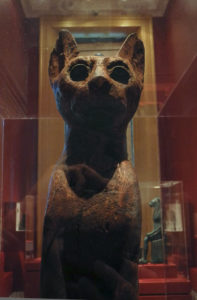
This is a figure of a cat called Saqqara from Egypt 350 B.C.E. This cat would have been seen as a god or close to a god. Cats were handled with care and given the utmost respect from the people in Egypt. This cat was most likely treated better than the peasants and slaves. The reason for that was how people envisioned the world back then. There was nothing special about a human if they weren’t the Pharaoh. Cats, dogs and other animals were seen as high beings due to the fact that these gods were mixed with features of different animals. It is a great example for my theme because it shows how in Egyptian society, Humans were centered as much.
Statuette of Anubis, Egypt- 332–30 B.C.- Met
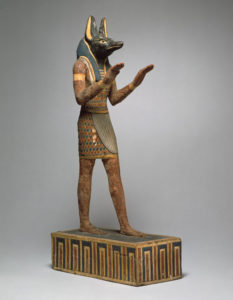
This figure is of the Egyptian god of embalming and death, Anubis. As I said before, certain animals had a certain importance because they had connections with gods. This is one example of an animal humanoid mixture. Anubis has a body of a human, but what anyone would recognize first would be head of a jackal. This is important to my theme because with the head of a jackal Anubis shows no real human emotions and is seen to be set apart from what a human being would be. The Egyptians made their gods so different from a human because they didn’t understand the world yet.
Roman statue of bearded Hercules- Met by Brandon Falls- Brooklyn Museum
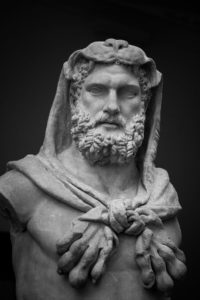
This is statue is an image of Hercules. This is important because of what Hercules symbolizes. He symbolizes Humanism itself and how humanity has changed. He is the son of Zeus and Alcmene. This means his father was a god that mingled with human beings and had the same emotions of love and courtship as a regular human. This is a change from the past Egyptian beliefs of gods only having children with other gods. This shows that a god can come down and share the same emotional space as a human being. Obviously different from the past where gods showed no emotions to humans. Their best guest was that they angered the gods. This new system put humans in the center of the world along with the gods.
Sardonyx cameo fragment with Jupiter astride an eagle- 1st century B.C.–1st century A.D.- Met
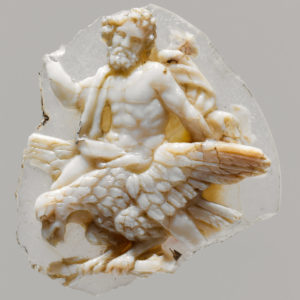
For this figure i’ll be pointing out the animal representation in this piece from the Egyptian pieces. Unlike how animals were praised in the Egypt we see a change where animals are mere tools instead of worshipped. This has to do with Humanism. People believe themselves to be in the center of the world and more important than animals. Animals aren’t seen to be important until they are useful to be used by humans.
Latona and Her Children: Apollo and Diana- Met by William Henry Rinehart
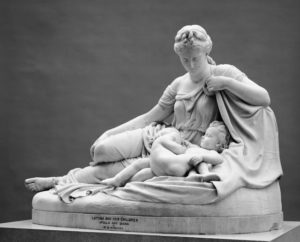
This is the most important symbol that shows how Humanism changed the depiction of gods, people and animals. Here’s Lotana the mother of Apollo and Artemis, two powerful olympian gods. The reason this is important is because of the way it depicts these gods. This sculpture shows how humanism brings that gods down to a human level. This implies that gods came into existence through something like childbirth. Not only is Lotana caring for her children, if you look closer you can almost see the emotions in the picture. You can see her face admiring her children. Makes you feel as if those children were actual humans and not powerful gods.



